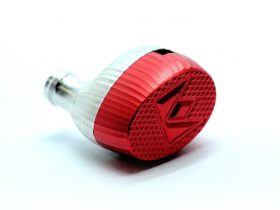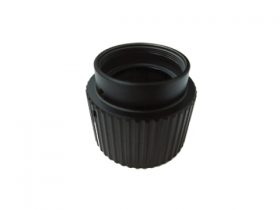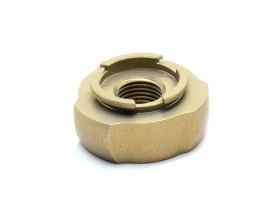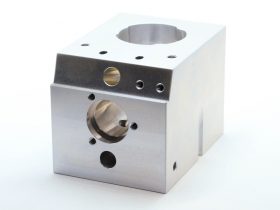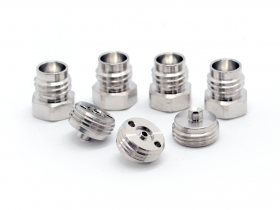SURFACE TREATMENT
Our services are including metal plating, anodizing, hard anodizing, nickel plating, chromium black oxide plating, flash chrome plating, hard chrome plating, passivate, clear chromate coating, stainless steel polishing, passivation, electrolytic polishing and chemical polishing
ANODIZE
Anodizing is a process used to prevent the corrosion of aluminium. It uses electric current to create layer of stable aluminium oxide (Al2O3) that coats the workpiece’s surface. Electroplaing process that uses electrolysis of aluminium oxide (from anodizing) will create matte finish with very small pores. Dyes will be retained within these pores. Anodizing gives more resistance to corrosion, as well as electrical insulating property, to the surface of aluminum
CHROME
Hard chrome plating is an electrolytic deposition process using chromium. It can be done on almost every type of materials, except aluminium and lead dross. Steel is the most popular metal to be plated with hard chrome, especially hardened steel. Hard chrome plating can be divided into 2 types. Thin plating – is the process used in order to extend the life of machine’s part, which is usually used at high wear rate. Thick plating – is the process used in order to repair broken parts, making them become as efficiently usable as original. CLEAR CHROMATE This is the treatment for aluminium workpiece’s surface, using chemical reaction. It increases corrosion resistance in the atmosphere of the surface, while maintains good electrical conductivity. Besides, it also helps conditioning workpiece’s surface
BLACK OXIDE
Black oxide plating, aka blackening, is the use of chemicals to react with iron surface in order to create black rust. Black rust will stop the spreading of rust and corrosion on iron surface
ELECTROLESS NICKEL
This is the surface coating to enhance the workpiece’s properties – to have the same properties as the coating metal – and make it more suitable for applications. These properties are including physical and chemical properties such as attractiveness, hardness, wear resistance and corrosion resistance. Nowadays, electroless plating became more widely used as it can work on every type of workpiece: main disadvantage of electroplating is that the workpiece must be electrical conductive. Besides, this technique has high throwing power, so it gives less porosity and more uniformity of surface thickness along the workpiece’s surface
ELECTROLESS POLISHING
Electrical and chemical polishing with technically correct controlling method, for the best quality in cleanness and slickness of the workpiece. These processes can polish deeply into every small corners or tiny details, while stone polisher or velvet polishing wheel cannot. Workpiece that went through electropolishing process will have glossy and shiny surface. Beside, this method is time saving, labor saving. It also helps deburring in the corners, even where the tools cannot reach
PASSIVATION
Passivation is the surface treatment process after welding, lathing, cutting and machining. During these processes, iron dust and other contamination will cause impurities on the surface and make the workpiece prone to rusting. Passivation is a chemical process that induces thin layer of chromium passive films to cover workpiece’s surface. The main objective of this passive film is to increase resistance to corrosion, moisture and rust. It also makes the surface easier to clean



